Dog Limping Front Leg: How to Manage and Treat

By Evelyn Harcourt
juillet 31, 2025 - 1 min read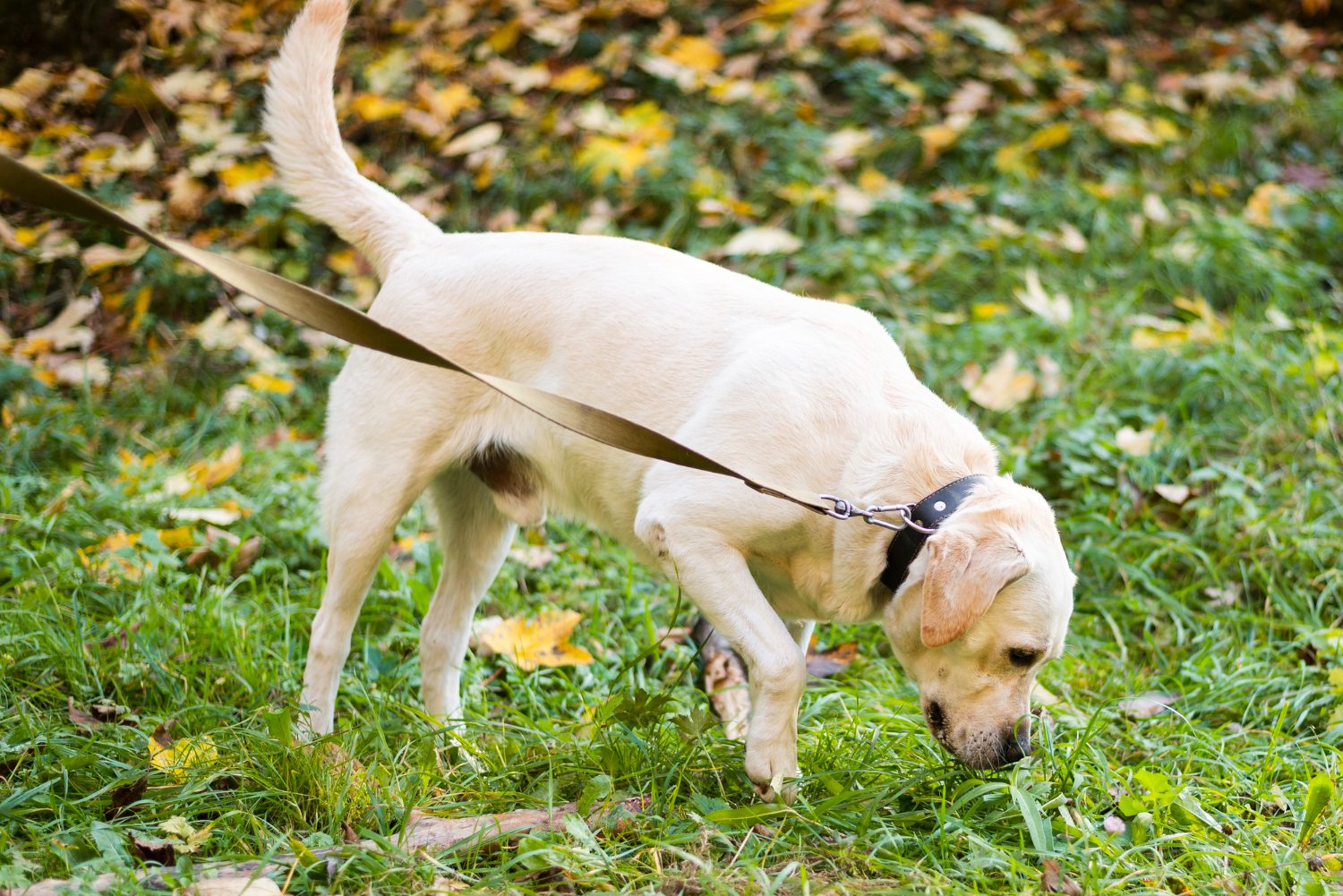
If your dog suddenly starts to hop, stumble, or walk with a limp, you may wonder what is going on.
A front leg limp is a common issue that can affect our furry friends, and it is seen in all ages and breeds. This sort of limp can be hard for a dog to cope with, as they bear the majority of their weight on their front limbs.
This article explores the potential causes of front limb lameness, how you can help from home, when vet care is needed, and what may happen at the vet clinic. Importantly, it also discusses how to prevent limping in the future.
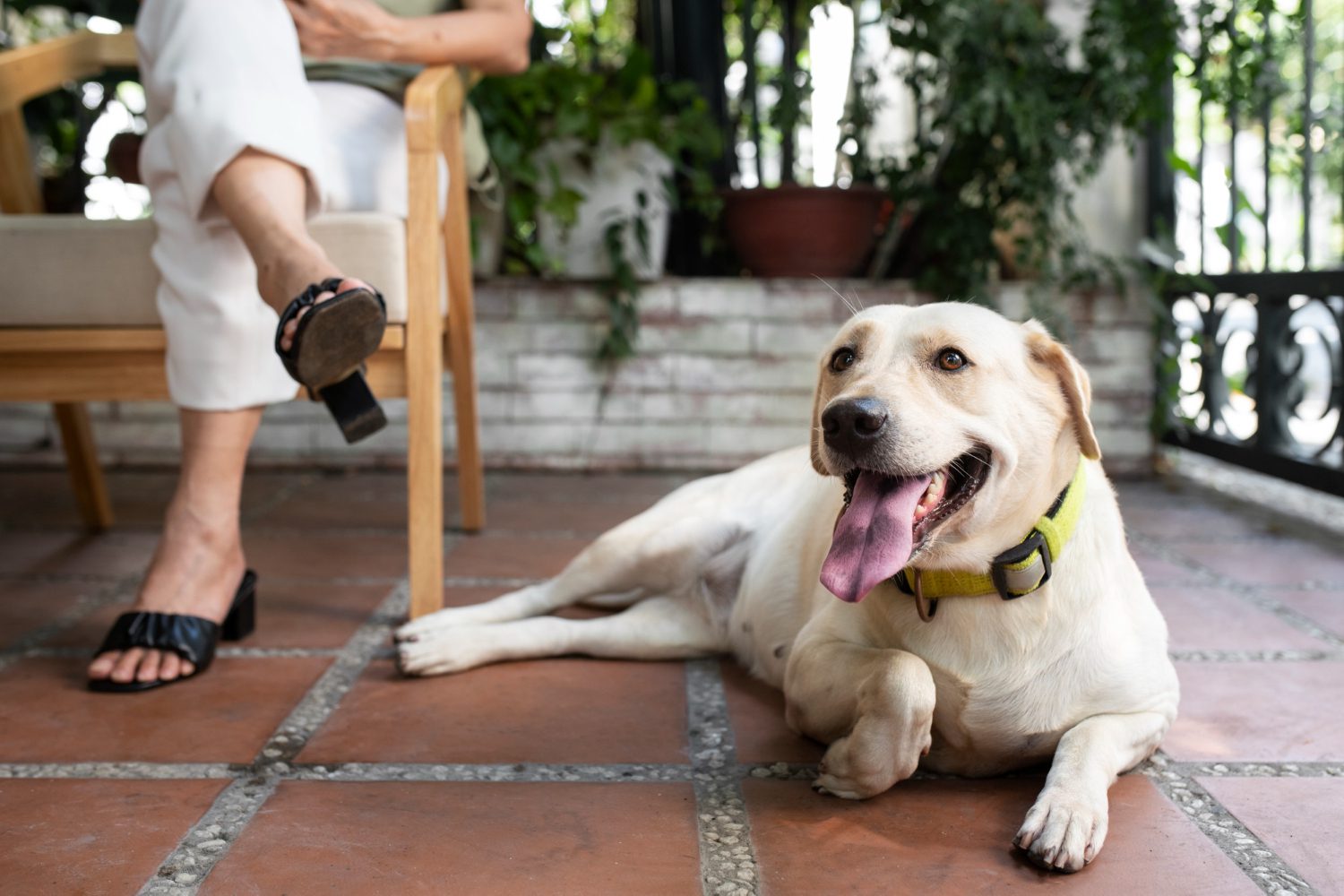
Spotting the Signs of Front-Leg Lameness
It is not always easy to detect lameness in the forelimb, especially if the dog is not lifting their leg.
Subtle vs. Obvious Limping
Of course, we can all spot an obvious limp. The dog holds one leg off the ground and compensates using the others.
However, sometimes the limp is subtle. The sore leg still makes contact with the ground, but the dog may guard or tense it.
You may notice your dog lands heavily on their healthy limb, and that their head bobs down as the forelimb without the limp makes contact with the ground.
When is it an Emergency?
See an emergency vet if your dog is in distress or pain. This can be the case, for example, if they have sustained an injury or they’re crying or restless.
Common Causes of Front-Leg Limping
There are a range of circumstances in which a forelimb limp can occur.
Soft-Tissue Injuries (Strains & Sprains)
Most commonly, you’ll be dealing with a muscular injury. The biceps tendon and the collateral ligament in the wrist are two locations commonly affected.
Paw & Nail Problems
As the paws contact the ground, issues frequently develop here. These include foreign bodies embedding in the pad, paw pad burns, and broken claws.
Joint Issues
Joint disease such as chronic osteoarthritis (inflammation of the joints) is prevalent in middle aged and older dogs. Signs are typically worse after lying down for prolonged periods.
Trauma & Fractures
Getting hit by vehicles or falling from heights can result in dislocated or broken bones in the forelimb. Dog fights are another cause for limping, usually due to the pain associated with the infection and soft tissue swelling.
Developmental Disorders
Some of the more common developmental disorders seen in young dogs include elbow dysplasia, OCD (a developmental disorder of the cartilage seen in young dogs), and hypertrophic osteodystrophy.
Infectious & Immune-Mediated Conditions
There is also the chance that forelimb lameness is caused by an infection (such as Lyme’s disease) or an immune-mediated condition, like Immune-mediated Polyarthritis (IMPA). These conditions are relatively uncommon, though.
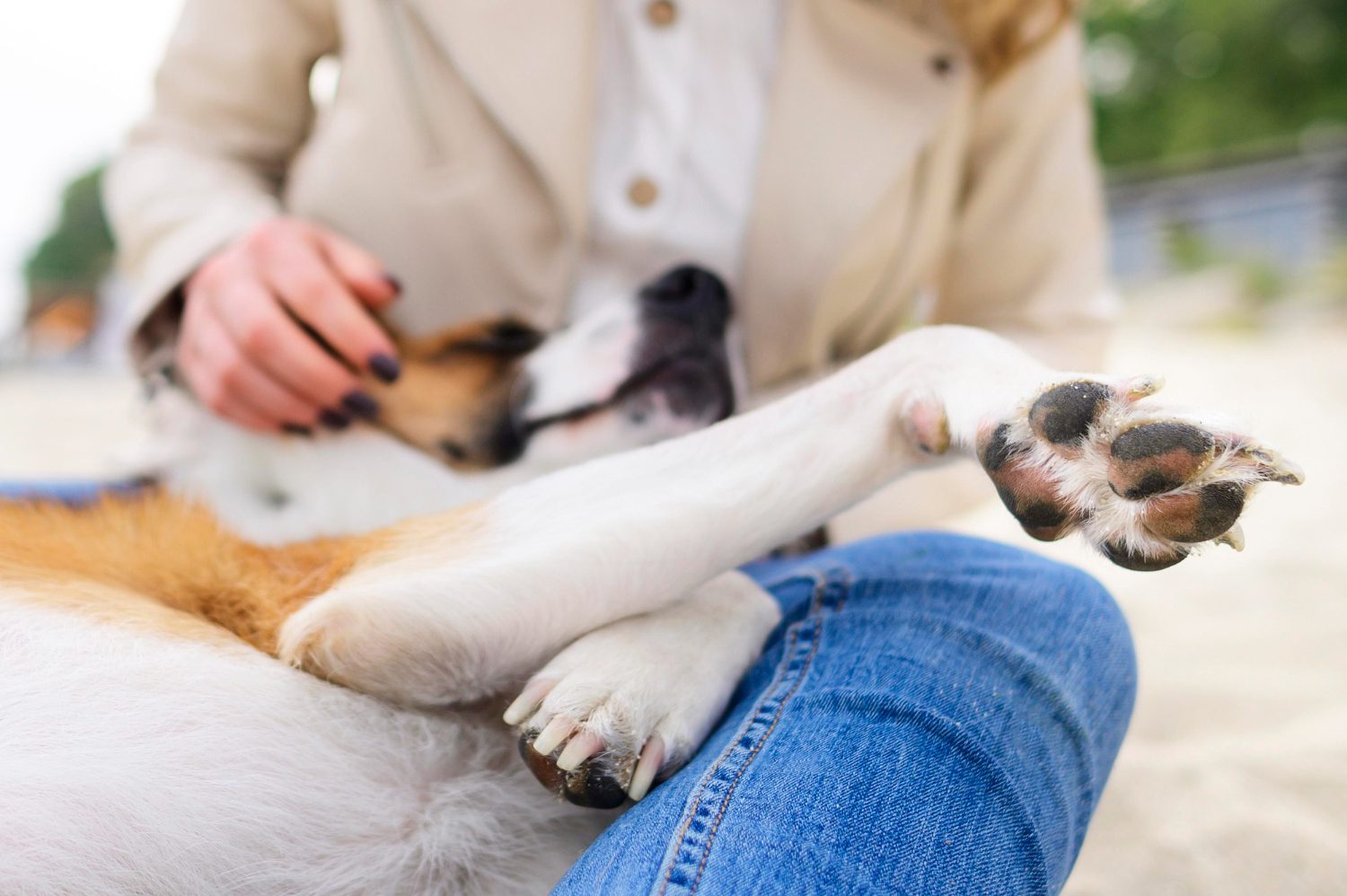
First-Aid Care at Home
There are several things you can do from home to help right away.
Immediate Rest and Restriction
Dogs do not understand how to rest and will continue to run and jump, even if this is delaying their recovery.
You can limit their movement by keeping them on a short lead and just bringing them out for toileting purposes. Avoid using steps or stairs, and ensure they do not jump off furniture.
Safe Use of Over-the-Counter Pain Relief
It is generally best to avoid giving medicine until after they have seen their veterinarian. In urgent cases if a vet is not able to see you promptly, they may advise you to give a medicine such as Paracetamol from home.
Giving this to the wrong patient or at too high a dose can do more harm than good, so it should only be given under vet supervision.
Monitoring for Worsening Signs
Keep a close eye for any new symptoms such as:
- A limp developing in other limbs
- Swelling or puffiness of the limb
- Paw licking
- Red skin
- Development of any lesions, such as ulcers or scabs.
- Lethargy
- Fever
- Food refusal
Getting a Veterinary Diagnosis
Most limps that last more than a day or two, or that are associated with other signs such as limb swelling or paw licking, should be looked into by the vet.
What to Expect at the Veterinary Clinic
Your vet may walk and trot your dog up and down or ask you to watch a video of it moving. They’ll want to see its movement from a head-on, side-on, and back position.
They’ll also perform a full orthopaedic and neurological exam, checking to see if your dog has a full range of motion and where it feels pain.
Diagnostic Imaging Explained
It is not uncommon to order diagnostic imaging, particularly in cases of severe or persistent limps.
X-rays are sometimes helpful, but for complex joints like the elbow, imaging studies like CT scans are preferred, as they provide more detail.
Lab Tests and Joint Fluid Analysis
Your vet may run some further diagnostic tests, such as a blood test. This can assess for infectious markers or any changes in protein levels.
If fluid builds up, it may be aspirated and assessed under the microscope (cytology) or cultured (any bacteria or fungi present are grown in the lab).
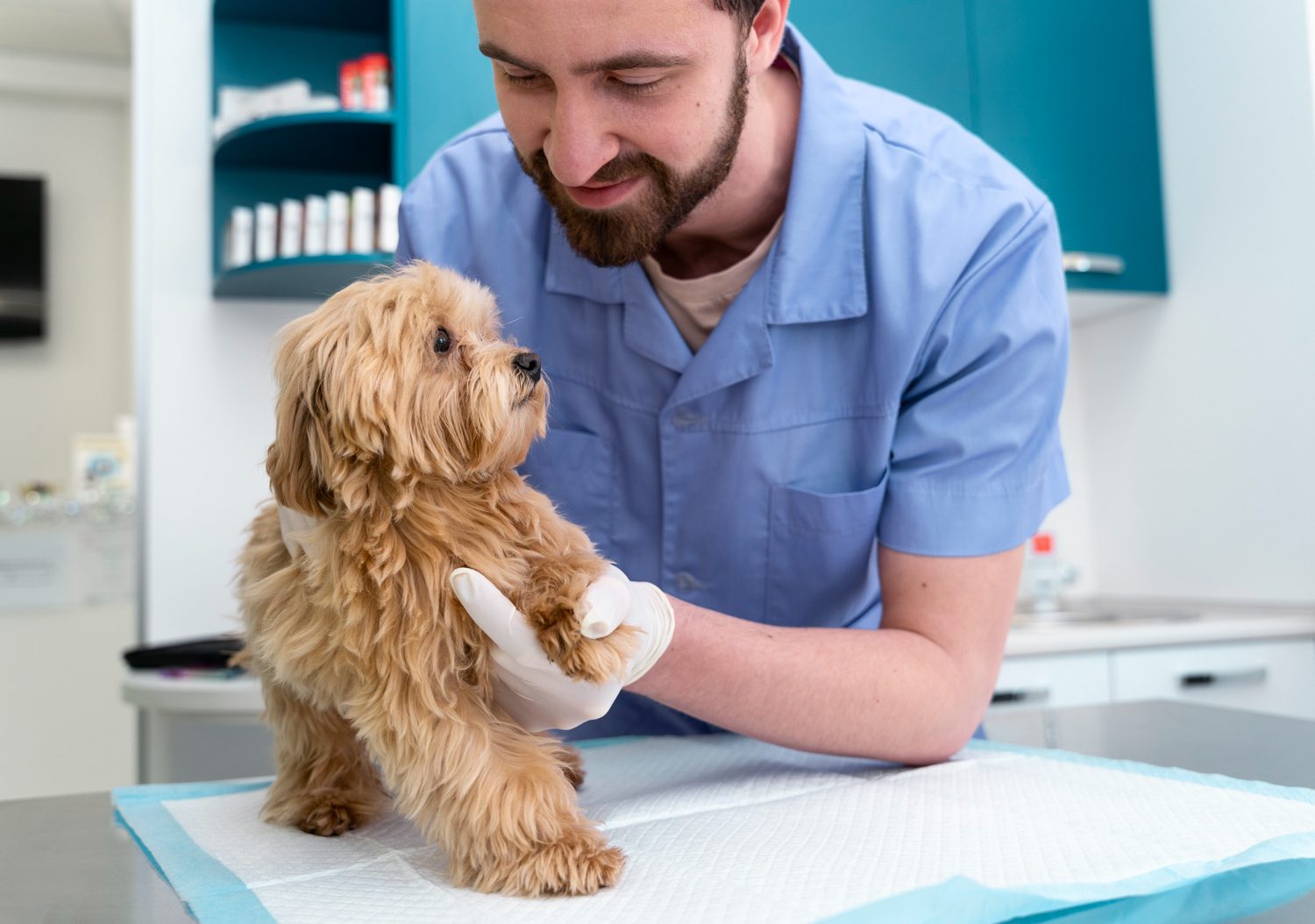
Treatment Options for Dog Limping
The best therapy for your dog is going to depend on the reason for their limp.
Conservative Management
Most dogs respond nicely to rest, pain relief, and anti-inflammatories. In less than a week, most have recovered.
For those with more severe injuries, this rest and medication period is likely to last longer. Help keep your dog mentally stimulated using puzzle feeders, Kongs and other interactive games.
Surgical Interventions
For some individuals, the best chance of a successful outcome is going to be surgery. This can include cases of OCD lesions, with specialised orthopaedic surgery, the gold standard therapy, so the loose cartilage can be removed using a small camera.
Surgery is also recommended if there is a broken nail that must be removed, or a foxtail embedded deep under the skin.
Alternative Therapies
Your vet may also discuss adjunctive care such as hydrotherapy, physiotherapy, laser, and acupuncture. For many, the best results are seen using a multi-modal approach to their recovery.
As an example, physiotherapy and surgery go hand in hand for the treatment of many orthopaedic conditions.
Recovery and Home Management
At home, you can help your dog recover quickly and comfortably.
Creating a Safe Healing Environment
The home should be their sanctuary. A calm and quiet place where they can rest peacefully and do not feel the need to get up and move often. Keep other pets and children separate as they recover. Provide a padded, orthopaedic bed.
Gradual Return to Activity
Avoid rushing back into regular activity. Build your dog back up slowly. Taking things too quickly can lead to a poor recovery or even another injury. Your vet can discuss the ideal timeline, as it depends on the cause of your dog’s limp.
Nutrition and Supplements for Joint Health
Offer a high-quality diet enriched in fatty acids and joint protective ingredients like Glucosamine and Chondroitin Sulphate.
Some foods are aimed at supporting joint health, or you can add a joint support supplement to your dog’s meals.
Limit calories if your dog is exercising less to avoid undesired weight gain during the recovery period.
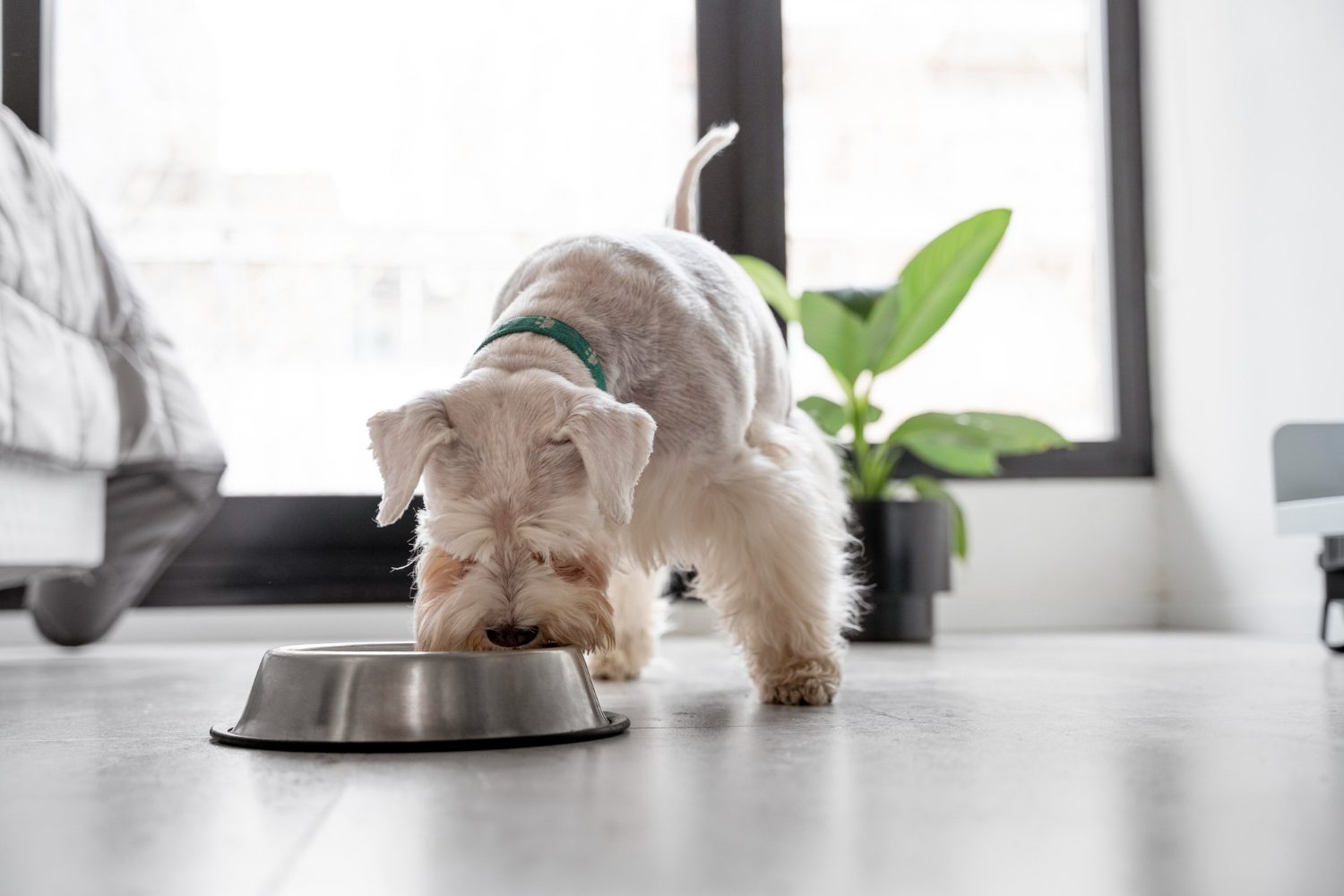
Preventing Future Limping Episodes
Though not every limp can be prevented, you do have the ability to avoid certain episodes.
Weight Management & Fitness
Slim dogs are less prone to joint disease and can recover quickly than dogs who are obese. Aim for a Body Condition Score of 3-4 out of 9.
Stick to a consistent exercise schedule, trying to offer the same amount each day. Many dogs live a sedentary life during the week, and go for long hikes on the weekend– the so-called ‘weekend warriors’. This is a recipe for injury, as their body is not used to the exercise.
Paw & Nail Care Routine
Keep your dog’s claws trimmed short, as long nails are at higher risk of splitting or breaking.
After being outside in a field with burrs, ticks, or grass seeds, check between toes to ensure there are none.
Avoid hot pavement, sand or astroturf during hot weather. Similarly, do not allow your dog to run on gravel, as it is too abrasive and can tear the pads.
Early Screening for At-Risk Breeds
Certain breeds are at higher risk of genetic diseases like elbow dysplasia.
Only purchase from breeders that screen the parents, and consider elbow imaging at the age of one in breeds like the Labrador and Newfoundland.
Learn More About Your Dog's Limping
You are encouraged to contact us at any time if your dog has developed a limp or a change in their movement.
Our team is here and ready to help, ensuring your dog makes a quick recovery.
Dog Limping Front Leg FAQs
Can a dog’s limp resolve on its own?
Certainly. A mild strain or sprain is often fixed after resting overnight.
Should I still walk my dog if it’s limping?
If your dog has started limping, avoid any exercise until it has been examined and we have a clearer image of what is going on.
How long does front-leg lameness usually take to heal?
Timelines vary and depend on the type and severity of the issue. A mild strain can heal within a day, while something like arthritis is a chronic condition that cannot be cured.
Continue reading

Signs a Cat is in Pain and How to Recognise Them
Learn how to recognise pain in your cat and the subtle signs to look out for.
Read article
What to Do If Your Dog Eats Chocolate?
Learn what to do if your dog eats chocolate and the signs of toxicity to look out for.
Read article
Signs of Hypothermia in a Dog and How to Treat It
Learn the signs of dog hypothermia and how to treat it quickly and safely.
Read article